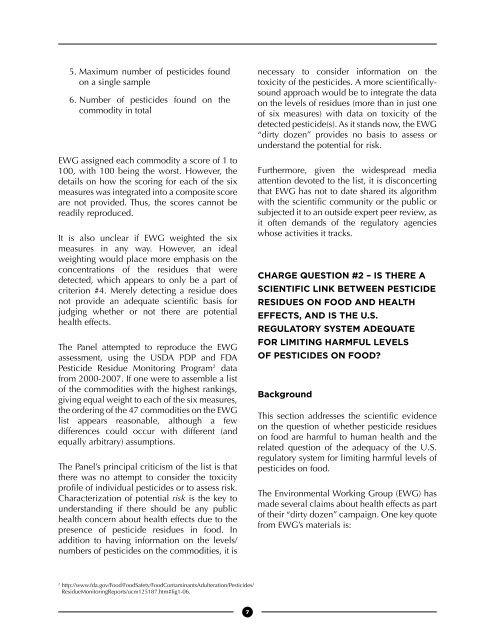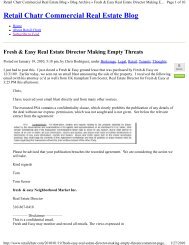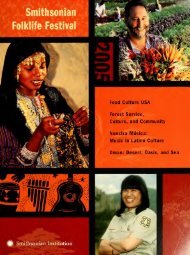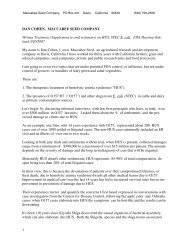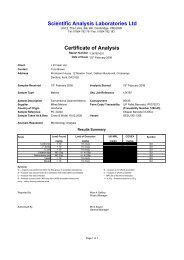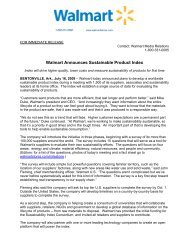here - Perishable Pundit
here - Perishable Pundit
here - Perishable Pundit
You also want an ePaper? Increase the reach of your titles
YUMPU automatically turns print PDFs into web optimized ePapers that Google loves.
5. Maximum number of pesticides foundon a single sample6. Number of pesticides found on thecommodity in totalEWG assigned each commodity a score of 1 to100, with 100 being the worst. However, thedetails on how the scoring for each of the sixmeasures was integrated into a composite scoreare not provided. Thus, the scores cannot bereadily reproduced.It is also unclear if EWG weighted the sixmeasures in any way. However, an idealweighting would place more emphasis on theconcentrations of the residues that weredetected, which appears to only be a part ofcriterion #4. Merely detecting a residue doesnot provide an adequate scientific basis forjudging whether or not t<strong>here</strong> are potentialhealth effects.The Panel attempted to reproduce the EWGassessment, using the USDA PDP and FDAPesticide Residue Monitoring Program 2 datafrom 2000-2007. If one were to assemble a listof the commodities with the highest rankings,giving equal weight to each of the six measures,the ordering of the 47 commodities on the EWGlist appears reasonable, although a fewdifferences could occur with different (andequally arbitrary) assumptions.The Panel’s principal criticism of the list is thatt<strong>here</strong> was no attempt to consider the toxicityprofile of individual pesticides or to assess risk.Characterization of potential risk is the key tounderstanding if t<strong>here</strong> should be any publichealth concern about health effects due to thepresence of pesticide residues in food. Inaddition to having information on the levels/numbers of pesticides on the commodities, it isnecessary to consider information on thetoxicity of the pesticides. A more scientificallysoundapproach would be to integrate the dataon the levels of residues (more than in just oneof six measures) with data on toxicity of thedetected pesticide(s). As it stands now, the EWG“dirty dozen” provides no basis to assess orunderstand the potential for risk.Furthermore, given the widespread mediaattention devoted to the list, it is disconcertingthat EWG has not to date shared its algorithmwith the scientific community or the public orsubjected it to an outside expert peer review, asit often demands of the regulatory agencieswhose activities it tracks.Charge Question #2 – Is t<strong>here</strong> ascientific link between pesticideresidues on food and healtheffects, and is the U.S.regulatory system adequatefor limiting harmful levelsof pesticides on food?BackgroundThis section addresses the scientific evidenceon the question of whether pesticide residueson food are harmful to human health and t<strong>here</strong>lated question of the adequacy of the U.S.regulatory system for limiting harmful levels ofpesticides on food.The Environmental Working Group (EWG) hasmade several claims about health effects as partof their “dirty dozen” campaign. One key quotefrom EWG’s materials is:2http://www.fda.gov/Food/FoodSafety/FoodContaminantsAdulteration/Pesticides/ResidueMonitoringReports/ucm125187.htm#fig1-06.7


